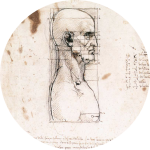 Cervical Myelopathy
Cervical Myelopathy
DEFINITION
Myelopathy is the term designated to all chronic cord lesions regardless of their etiologic origins which may be vascular, inflammatory, nutritional deficiency, post-radiation etc ... but the term myelopathy is more restrictive and should be reserved for a chronic cord lesion resulting from the reduction in the dimensions of the cervical spinal canal of which the main etiology is cervical spondylosis.
HISTORY
![]() 1823 : Charles Prosper Ollivier d’Angers in "From the spinal cord and its diseases" suggests a link between a protruding intervertebral disc and the myelopathy.
1823 : Charles Prosper Ollivier d’Angers in "From the spinal cord and its diseases" suggests a link between a protruding intervertebral disc and the myelopathy.![]() 1888 : Strumpell and Pierre-Marie (1898) studying the "spinal cord lesions from chronic cervical osteoarthritis" reported the the relationship between spondylosis and paraplegia.
1888 : Strumpell and Pierre-Marie (1898) studying the "spinal cord lesions from chronic cervical osteoarthritis" reported the the relationship between spondylosis and paraplegia.![]() 1892 : Victor Horsely did a cervical laminectomy for a patient with cervical spondylotic myelopathy in TaylorJ, CollierJ. The occurrence of lesions in optic neuritis of the spinal cord-Injury, tumor, myelitis. (An account of twelve cases and one autopsy). Brain1901; 24:532.
1892 : Victor Horsely did a cervical laminectomy for a patient with cervical spondylotic myelopathy in TaylorJ, CollierJ. The occurrence of lesions in optic neuritis of the spinal cord-Injury, tumor, myelitis. (An account of twelve cases and one autopsy). Brain1901; 24:532.![]() 1928 : JA Barré YC Liu and specified the role of cervical spondylosis in the genesis of certain myelopathies.
1928 : JA Barré YC Liu and specified the role of cervical spondylosis in the genesis of certain myelopathies.![]() 1952 : W. R. Brain, D. Northfield and Mr Wilkinsonin The neurological manifestation of cervical spondylosis. Brain (1952) 75 (2): 187-225 published the first work on the neurological manifestations of cervical spondylosis.
1952 : W. R. Brain, D. Northfield and Mr Wilkinsonin The neurological manifestation of cervical spondylosis. Brain (1952) 75 (2): 187-225 published the first work on the neurological manifestations of cervical spondylosis.![]() 1955 : Robinson RA, Smith GW. Anterolateral cervical disc removal and interbody fusion for cervical disk syndrom. Bull Johns Hopkins Hosp 1955; 96: 223 (Abstract)
1955 : Robinson RA, Smith GW. Anterolateral cervical disc removal and interbody fusion for cervical disk syndrom. Bull Johns Hopkins Hosp 1955; 96: 223 (Abstract)![]() 1956 : Wolf B, Khilnani M, Malis L. Emphasized on the importance of narrowing of the cervical canal in the genesis of cord complications in The sagittal diameter of the bony cervical spinal canal and its significance in cervical spondylosis. J. Mount Sinai Hosp 1956; 23:283 -292.
1956 : Wolf B, Khilnani M, Malis L. Emphasized on the importance of narrowing of the cervical canal in the genesis of cord complications in The sagittal diameter of the bony cervical spinal canal and its significance in cervical spondylosis. J. Mount Sinai Hosp 1956; 23:283 -292.
EPIDEMIOLOGY
Cervical spondylotic myelopathy represents 55% of cervical myelopathies in adults (7). The condition is observed mostly after the age of 50 years, with men more affected than women. Its incidence increases with age and it is a leading cause of functional disability in the elderly (25).
 Encyclopædia Neurochirurgica
Encyclopædia Neurochirurgica

